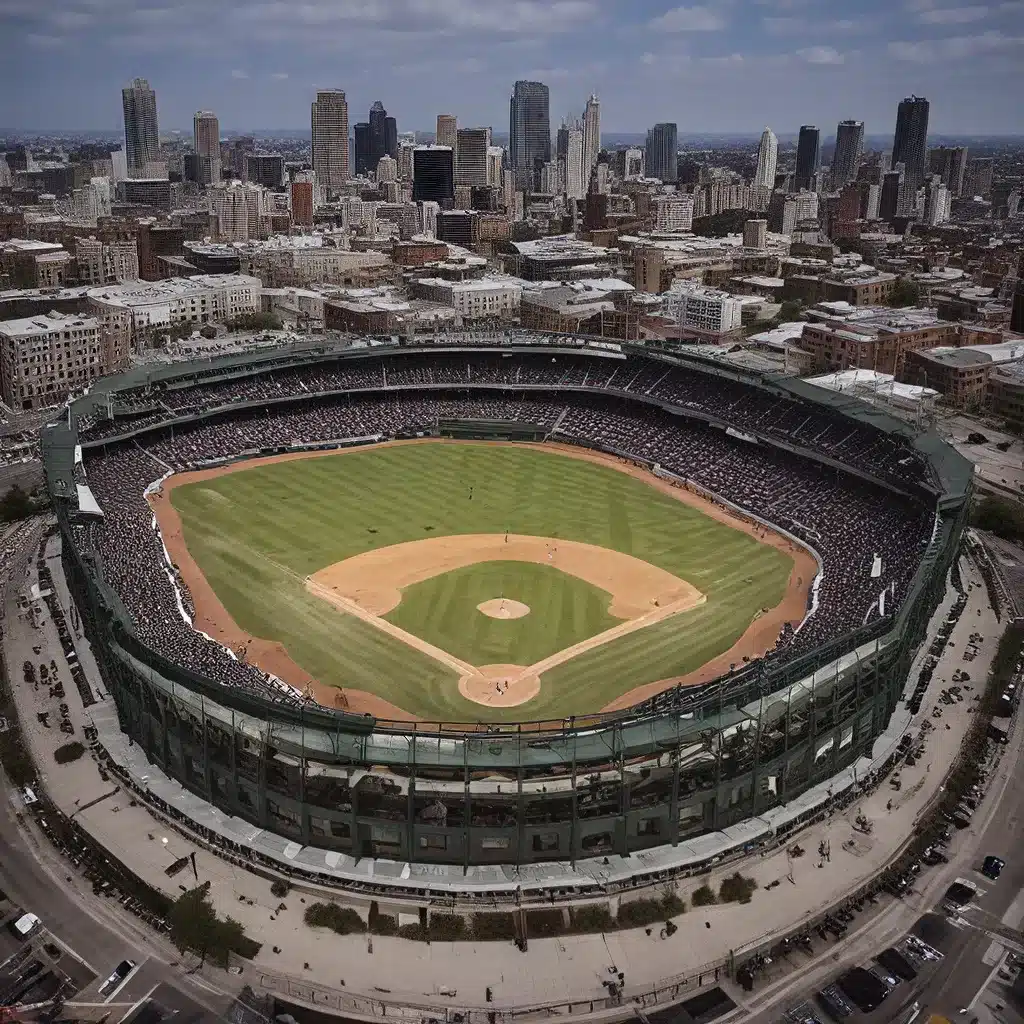
The Legacy of Wrigley Field
Wrigley Field, the iconic home of the Chicago Cubs, has been a cherished landmark in the heart of the city for over a century. As the second-oldest active Major League Baseball stadium after Fenway Park in Boston, Wrigley Field has become synonymous with the rich history and tradition of the sport. This historic ballpark has witnessed countless memorable moments, captivating players, and the unwavering devotion of its loyal fanbase.
Nestled in the vibrant Wrigleyville neighborhood, Wrigley Field’s timeless charm and unique character have made it a beloved destination for baseball enthusiasts and casual fans alike. The stadium’s iconic ivy-covered outfield walls, the manually operated scoreboard, and the rooftop seats overlooking the field all contribute to its enduring appeal, creating an atmosphere that transports visitors to a bygone era of the game.
The Influence of Day Baseball
One of the most distinctive features of Wrigley Field has been its long-standing commitment to day baseball. Unlike most modern stadiums that have embraced the convenience and revenue potential of night games, Wrigley Field has stubbornly clung to its daytime tradition, with the majority of its home games played under the sun. This unique aspect of the Cubs’ home field has not only shaped the team’s identity but has also had a profound impact on the overall fan experience.
For generations of Cubs fans, the opportunity to watch the team play in the afternoon sunlight has been a cherished part of the Wrigley Field experience. The rhythmic pace of day baseball, the picturesque setting, and the shared camaraderie of the crowd have all combined to create an atmosphere that is unparalleled in modern sports. As the author Scott Simon eloquently described, “The sun was shining on Cubs baseball at Wrigley Field just like it always should.”
The Struggle for Night Games
However, the Cubs’ resistance to night baseball was not without its challenges. In the late 1980s, as the pressure to modernize and generate more revenue mounted, the team finally acquiesced to the installation of lights at Wrigley Field. The first official night game at the historic stadium was played on August 9, 1988, marking a significant shift in the team’s long-standing tradition.
The decision to introduce night games was not without controversy, as it was met with strong opposition from the local community. The “CUBS Citizens United for Baseball in Sunshine” group, composed of Wrigleyville residents, argued that the increased noise and traffic would negatively impact the neighborhood. Their efforts to preserve the daytime experience ultimately delayed the implementation of night games at Wrigley Field for several years.
The Changing Landscape of Wrigley Field
Despite the resistance, the Cubs gradually increased the number of night games at Wrigley Field over the years. Today, the stadium’s schedule includes a mix of day and night games, with a shift towards more evening contests to accommodate the demands of modern sports viewership and television broadcasting.
This evolution has not come without its critics, who lament the loss of Wrigley Field’s unique daytime character. However, the Cubs organization has sought to strike a balance, preserving the stadium’s historic charm while adapting to the changing realities of the industry.
In addition to the night game debate, Wrigley Field has also faced other challenges in maintaining its iconic status. The need for renovations and upgrades to meet modern standards, the impact of development in the surrounding neighborhood, and the constant pressure to generate additional revenue have all posed challenges to the preservation of the stadium’s heritage.
The Enduring Appeal of Wrigley Field
Despite these changes, Wrigley Field remains a beloved and iconic symbol of Chicago baseball. Its timeless architecture, the passionate Cubs fanbase, and the sense of history and tradition that permeates the stadium continue to captivate visitors from around the world.
As the Chicago Cubs strive to build upon their 2016 World Series championship, Wrigley Field remains at the heart of their identity. The stadium’s mystique and allure have endured throughout the decades, making it a must-visit destination for any baseball fan or lover of sporting history.
Whether it’s the roar of the crowd during a crucial moment, the smell of hot dogs and peanuts wafting through the air, or the breathtaking views from the rooftops, Wrigley Field continues to captivate and enchant all who step through its gates. It is a testament to the enduring power of sports to bring people together, to create lasting memories, and to forge an unbreakable bond between a team and its devoted fans.
Conclusion
As Wrigley Field enters its second century, it stands as a living testament to the timeless allure of baseball and the unwavering spirit of the fans who have made it their second home. The stadium’s unique character, its rich history, and its enduring legacy will undoubtedly continue to inspire and captivate generations to come, solidifying its place as one of the most iconic and beloved sports venues in the world.

